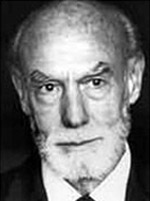Serendip is an independent site partnering with faculty at multiple colleges and universities around the world. Happy exploring!
Neuroscience Timeline
A Timeline of Neuroscience Research
 |
2nd Century | Galen of Pergamum identifies the brain as the organ of the mind. |
 |
17th Century | The brain becomes accepted as the substrate of mental life rather than its ventricles, as early writers had proposed. |
 |
1664 | Thomas Willis publishes Cerebri anatome, with illustrations of the brain by Christopher Wren. It is the most comprehensive treatise on brain anatomy and function published up to that time. |
 |
1791 | Luigi Galvani reveals the electric nature of nervous action by stimulating nerves and muscles of frog legs. |
 |
1808 | Franz Joseph Gall proposes that specific brain regions control specific functions. |
 |
1852 | Hermann von Helmholtz measures the speed of a nerve impulse in the frog. |
 |
1879 | Wilhelm Wundt establishes the first laboratory of experimental psychology in Leipzig, Germany. |
 |
1891 | Wilhelm von Waldeyer-Hartz introduces the term neuron. |
 |
1897 | Charles Sherrington introduces the term "synapse". |
 |
1898-1903 | Edward Thorndike and Ivan Pavlov describe operant and classical conditioning, two fundamental types of learning. |
 |
1906 | Santiago Ramón y Cajal summarizes compelling evidence for the neuron doctrine, that the nervous system is composed of discrete cells. |
 |
1906 | Alois Alzheimer describes the pathology of the neurodegenerative disease that comes to bear his name. |
 |
1914 | Henry Dale demonstrates the physiological action of acetylcholine, which is later identified as a neurotransmitter. |
 |
1929 | In a famous program of lesion experiments in rats, Karl Lashley attempts to localize memory in the brain. |
 |
1929 | Hans Berger uses human scalp electrodes to demonstrate electroencephalography. |
 |
1928-1932 | Edgar Adrian describes method for recording from single sensory and motor axons; H. Keffer Hartline applies this method to the recording of single-cell activity in the eye of the horseshoe crab. |
 |
1940s | Alan Hodgkin, Andrew Huxley, and Bernard Katz explain electrical activity of neurons by concentration gradients of ions and movement of ions through pores. |
| 1946 | Kenneth Cole develops the voltage-clamp technique to measure current flow across the cell membrane. | |
 |
1949 | Donald Hebb introduces a synaptic learning rule, which becomes known as the Hebb rule. |
 |
1930s-1950s | The chemical nature of synaptic transmission is established by Otto Loewi, Henry Dale, Wilhelm Feldberg, Stephen Kuffler, and Bernard Katz at peripheral synapses and is extended to the spinal cord by John Eccles and others. |
 |
1930s-1950s | Wilder Penfield and Theodore Rasmussen map the motor and sensory homunculus and illustrate localization of function in the human brain. |
 |
1950s | Karl von Frisch, Konrad Lorenz, and Nikolaas Tinbergen establish the science of ethology (animal behavior in natural contexts) and lay the foundation for neuroethology. |
 |
1955-1960 | Vernon Mountcastle, David Hubel, and Torsten Wiesel pioneer single-cell recording from mammalian sensory cortex; Nils-Ake Hillarp introduces fluorescent microscopic methods to study cellular distribution of biogenic amines. |
 |
1956 | Rita Levi-Montalcini and Stanley Cohen isolate and purify nerve growth factor. |
 |
1957 | Brenda Milner describes patient H.M. and discovers the importance of the medial temporal lobe for memory. |
 |
1958 | Arvid Carlsson finds dopamine to be a transmitter in the brain and proposes that it has a role in extrapyramidal disorders such as Parkinson's disease. |
 |
1958 | Simple invertebrate systems, including Aplysia, Drosophila, and C. elegans, are introduced to analyze elementary aspects of behavior and learning at the cellular and molecular level. |
 |
1962-1963 | Brain anatomy in rodents is found to be altered by experience; first evidence for role of protein synthesis in memory formation. |
 |
1963 | Roger Sperry proposes a precise system of chemical matching between pre- and postsynaptic neuronal partners (the chemoaffinity hypothesis). |
 |
1966-1969 | Ed Evarts and Robert Wurtz develop methods for studying movement and perception with single-cell recordings from awake, behaving monkeys. |
 |
1970 | Synaptic changes are related to learning and memory storage in Aplysia |
 |
Mid-1970s | Paul Greengard shows that many neurotransmitters work by means of protein phosphorylation. |
 |
1973 | Timothy Bliss and Terje Lomo discover long-term potentiation, a candidate synaptic mechanism for long-term mammalian memory. |
 |
1976 | Erwin Neher and Bert Sakmann develop the patch-clamp technique for recording the activity of single ion channels. |
 |
Late 1970s | Neuroimaging by positron emission tomography is developed. |
 |
1980s | Experimental evidence becomes available for the divisibility of memory into multiple systems; an animal model of human amnesia is developed. |
 |
1986 | H. Robert Horvitz discovers the ced genes, which are critical for programmed cell death. |
 |
1986 | Patient R.B. establishes the importance of the hippocampus for human memory. |
 |
1990 | Segi Ogawa and colleagues develop functional magnetic resonance imaging. |
 |
1990 | Mario Capecchi and Oliver Smythies develop gene knockout technology, which is soon applied to neuroscience. |
 |
1991 | Linda Buck and Richard Axel discover that the olfactory receptor family consists of over 1000 different genes. The anatomical components of the medial temporal lobe memory system are identified. |
 |
1993 | The Huntington's Disease Collaborative Research Group identifies the gene responsible for Huntington's disease. |
 |
1990s | Neural development is transformed from a descriptive to a molecular discipline by Gerald Fischbach, Jack McMahan, Tom Jessell, and Corey Goodman; neuroimaging is applied to problems of human cognition, including perception, attention, and memory. |
 |
1990s | Reinhard Jahn, James Rothman, Richard Scheller, and Thomas Sudhof delineate molecules critical for exocytosis. |
 |
1998 | First 3D structure of an ion channel is revealed by Rod MacKinnon. |



Comments
Timeline ends 1998...
What has happened after 1998??
Post new comment